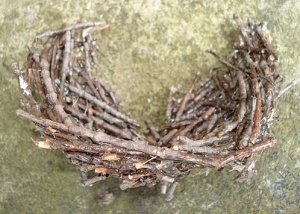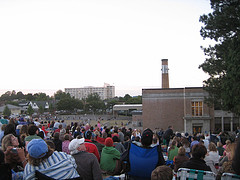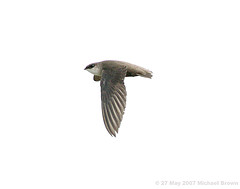Difference between revisions of "Chimney Swifts in Connecticut"
| Line 13: | Line 13: | ||
<span style="font-size: large">Biology and Conservation Status</span><br> | <span style="font-size: large">Biology and Conservation Status</span><br> | ||
| − | The Chimney Swift is an aerial insectivore that spends nearly all day on the wing, and roosts at night on sheltered, vertical surfaces. Historically, the chimney swift roosted and nested in large hollow trees in the Northeast, but as European colonization removed most large trees and began constructing chimneys, the swifts took advantage of this new structure. Chimney swift nests are constructed from small twigs and saliva that are glued to the vertical surface using saliva (see photo at right). (''Chateura pelagica'')... | + | The Chimney Swift is an aerial insectivore that spends nearly all day on the wing, and roosts at night on sheltered, vertical surfaces. Historically, the chimney swift roosted and nested in large hollow trees in the Northeast, but as European colonization removed most large trees and began constructing chimneys, the swifts took advantage of this new structure. Chimney swift nests are constructed from small twigs and saliva that are glued to the vertical surface using saliva (see photo at right), in a semicircular shape. Swifts are a migratory bird and typically return to Connecticut during the final week of April, and nest throughout May and June. (''Chateura pelagica'')... |
| Line 22: | Line 22: | ||
<span style="font-size: large">Monitoring</span><br> | <span style="font-size: large">Monitoring</span><br> | ||
| − | The CTDEP has been conducting Chimney Swift surveys for the past several years, but would like to | + | The CTDEP has been conducting Chimney Swift surveys for the past several years, but would like to employ a survey scheme that |
Revision as of 20:47, 9 May 2008
Page under construction.....
The Chimney Swift Project is a joint venture between the Uconn Ornithology Lab and the Connecticut Department of Environmental Protection (CTDEP). Chimney Swifts populations have experienced steady declines over the last several decades, yet the cause of this decline is unknown.
- Develop and initiate an effective monitoring program that can be replicated by the CTDEP and other state agencies throughout the region.
- Develop and test the effectiveness of a newly designed artificial nesting structure.
Biology and Conservation Status
The Chimney Swift is an aerial insectivore that spends nearly all day on the wing, and roosts at night on sheltered, vertical surfaces. Historically, the chimney swift roosted and nested in large hollow trees in the Northeast, but as European colonization removed most large trees and began constructing chimneys, the swifts took advantage of this new structure. Chimney swift nests are constructed from small twigs and saliva that are glued to the vertical surface using saliva (see photo at right), in a semicircular shape. Swifts are a migratory bird and typically return to Connecticut during the final week of April, and nest throughout May and June. (Chateura pelagica)...
Artificial Nesting Structures
One of the main goals of this project is to design and deploy artificial chimney swift "towers". Several organizations have published tower designs that have been demonstrated to successfully attract breeding swifts, but none of these designs have been empirically tested. Although these tower designs have been successful, they can be expensive, labor intensive, and require significant skill to constuct. We intend to develop and test a tower design that is: relatively inexpensive, easy to construct, moveable, and composed of materials that are easy to obtain. A design that incorporates each of these traits is much more likely to be constructed and deployed by state agencies, conservation organizations, and private landowners.
Monitoring
The CTDEP has been conducting Chimney Swift surveys for the past several years, but would like to employ a survey scheme that
Public Education
There is great opportunity for public education throughout the duration of this project, and long into the future if the towers become a permanent fixture in the landscape.
Photo Credits:
(1) Michael Brown, 2007. http://www.flickr.com/photos/67383370@N00/518587619/
(2) Mon@rch: http://monarchbfly.com
(3) Irene: http://www.flickr.com/photos/7791990@N04/1431355860/



